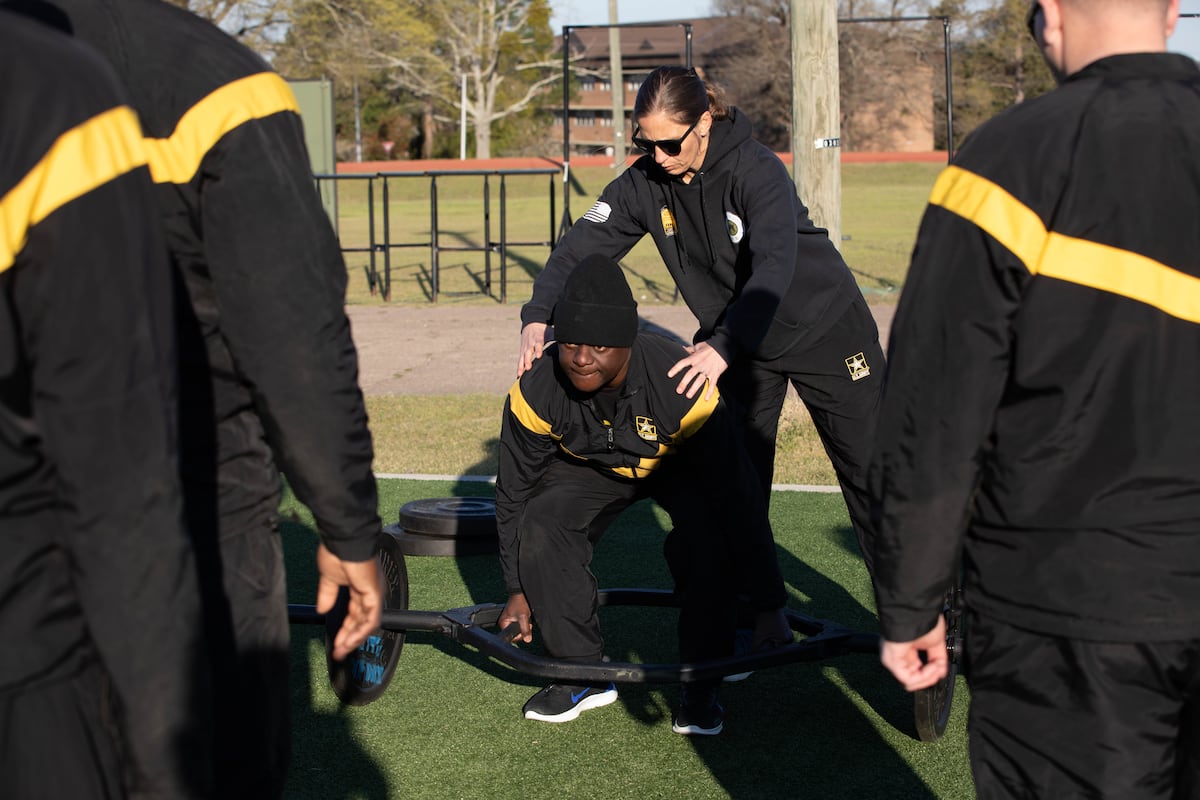The Army is swapping athletic trainer positions from its Holistic Health and Fitness teams for more strength and conditioning coaches.
Army Vice Chief of Staff Gen. James Mingus told Army Times that the move will keep control of instructors in the Army’s chain of command, and allow for the service-wide rollout of the plan to continue on schedule.
The move, reported April 16 by Military.com from a leaked internal staff memo, will take effect in the coming months.
RELATED
The H2F teams currently include a mix of four athletic trainers and seven strength coaches at the brigade level.
Under the new plan, those teams will contain 11 strength coaches and no athletic trainers.
Mingus said that athletic trainers are licensed medical professionals and overseen by Defense Health Agency requirements. Those requirements are proving difficult to fill as the service spreads the program from its original 111 combat arms or combat arms support brigades to the entire Army over the coming years.
The athletic trainers focus primarily on returning soldiers to duty following injury and focusing training on injury prevention, Mingus said.
Strength coaches are more focused on optimizing human performance, he said.
Mingus told Army Times he was confident that a combination of injury prevention and mitigation by proper instruction and monitoring by strength coaches, battalion and brigade surgeons and medics could keep injuries down.
The fitness program covers five health domains — physical, sleep, nutrition, spiritual and mental — for an all-around approach to soldier health and performance. Each domain is overseen by experts in the field from strength and conditioning coaches to behavioral health professionals, registered dietitians and chaplains.
At every level, the Army has touted its H2F program, highlighting improved metrics for H2F-resourced brigades compared with brigades that lack support teams.
Data has shown a 30% decrease in musculoskeletal injuries, a 140% decrease in injury referral; a 22% reduction in behavioral health problems and a 26% increase in rifle expert qualifications.
“Fit people are harder to kill,” Mingus said.
In March, Lt. Gen. David Francis, deputy commander at Army Training and Doctrine Command, announced multiple pilot programs to expand different versions of H2F to Army National Guard and Army Reserve units.
Currently the Army is on track to have 71 active duty H2F-resourced brigades by October. The original goal was to reach 111 active duty brigades by 2030.
A series of six pilot studies in both the Guard and Reserve will examine how best to implement the program at smaller or dispersed units.
“We are committed to making sure that our Guard and Reserve folks are taken care of because when they go [deploy], they got to be just as strong and fast as everybody else,” Mingus said at the time.
The pilots will examine using both Area Support Teams and H2Fast concepts to determine how best to build teams to support such units.
An active duty pilot will convert a former embedded H2F team at Joint Base Lewis–McChord, Wash., to support the installation commander and smaller brigades at the base that did not have teams to look at dispersed coverage.
On the Reserve side, five-member H2Fast teams at the readiness division level will manage various health and fitness resources across their assigned units.
Todd South has written about crime, courts, government and the military for multiple publications since 2004 and was named a 2014 Pulitzer finalist for a co-written project on witness intimidation. Todd is a Marine veteran of the Iraq War.
Read the full article here



